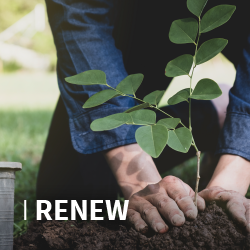Since its inception in 1911, recyclers have participated in the U.S. Mint’s Mutilated Coin Redemption Program, where individuals and businesses exchange damaged or mutilated coins that are no longer acceptable as legal tender. Though the recycling process has changed since the 1900s, the program’s purpose remains the same: to promote confidence in U.S. coinage.
Recovered coinage has become an integral part of many recycling companies’ operations, product mix, and bottom lines. On May 5, the Mint announced plans to revise the program, including a prohibition on redeeming coins damaged during the recycling process. In response, ISRI submitted comments advocating its reinstatement and providing recommendations to strengthen the program.
“The Mint believes the coins being damaged is enough to say they’re out of circulation, but we don’t quite agree with that,” says Billy Johnson, ISRI’s chief lobbyist who submitted the comments to the Mint. “Our members can identify the coins; they’re still effectively legal tender until they are completely unrecognizable or destroyed.”
The Mint claims debris on the coins makes it difficult to determine if they’re legitimate or counterfeit. However, its assessment falls short for ISRI members who clean and sort coins by denomination before submitting them. During the recycling process, coins go through various tumblers and get blasted with water to clean off any debris. “Our members clean the coins,” Johnson says. “If anyone tries to submit the coins dirty or in a manner that doesn’t work easily for inspection, then the Mint shouldn’t take them. But our members submit them in good form; they follow the Mint’s own rules.”
The Mint claims it’s become flooded with damaged coins, overwhelming the inspection process. While traveling through an auto shredder, coins become bent and twisted and end up in the nonferrous mixed metal stream, called Zorba, when leaving the shredder. Around 2003, much of the Zorba generated in the U.S. began going to China because of the country’s high demand for aluminum. “Handpicking of the material resulted in a far greater quantity of coins being recovered than ever before, hence the sudden increase in the amount of U.S. coins being redeemed at the Mint by foreign participants,” ISRI explains in its comments.
Worried about the possibility of fraud within the program, the Mint reported its concerns to the Treasury Department’s Office of Inspector General (OIG) in 2008. In its report, the OIG identified weaknesses, and noted that addressing those vulnerabilities would strengthen the program’s integrity. In 2010, the OIG released a report describing the review and outlining recommendations for the program, including developing and requiring legal certification forms; conducting thorough inspections of incoming shipments of coins to verify authenticity; redeeming only those coins that are mutilated; and requiring more information from vendors prior to payment.
ISRI strongly supported those recommendations, and suggested the Mint create a qualified redemption program for participants who have presented coins before and are willing to undergo site visits and audits. In 2015, when the Mint initially suspended the redemption program to assess its security, ISRI suggested establishing a registered supplier program. Participants would be required to register with the Mint and provide basic information like business addresses and contacts, and agree to allow random inspections by the Mint.
For the qualified redemption program, recyclers who demonstrate compliance with the regulations and are willing to undergo additional requirements would be allowed to continue redeeming coins. Qualified recyclers would undergo annual and random facility inspections; further sort coins if necessary; provide additional documentation; purchase surety bonds; and comply with industry management system standards like the Recycling Industry Operating Standards™ (RIOS™), ISO 9000, or other ASTM standards.
Recyclers are willing go through additional requirements to continue participating in the program, Johnson notes. “The Mint makes the rules and recyclers abide by them; now the Mint is saying it won’t let our members abide by the rules, so it’s frustrating.”
Though the Mint has taken issue with coins collected through the auto shredding process, “By shredding the coins and redeeming them, recyclers are getting rid of damaged coins and therefore helping protect the integrity [of U.S. coinage],” Johnson explains. “Shredding is energy efficient, and better for worker safety and productivity because people aren’t picking through the coins.”
Melting old coins into new ones saves energy and reduces mining for precious metals. Recycling and reclaiming the valuable commodities are “integral for environmental sustainability and circularity,” which, in turn, are key elements of President Biden’s environmental and climate agenda, ISRI notes in its comments. “The process conserves natural resources,” Johnson says. “Recycling those coins not only saves energy but also taxpayer money.”
Since 2015, when the Mint suspended coin reclamation, recyclers have collected and stored damaged coins since 2015. After reinstating the program in 2018 with revisions that included new guidelines and certifications for submissions, the Mint shut it down again in 2019. “During those few months of operations, only a very few participants were able to redeem even some of their coins,” ISRI explained in the comments. The association asked the Mint for information while recyclers continued stockpiling collected coins. “The Mint kept saying it liked the program and would resume it, so our members continued collecting these coins and provide the security around them at a terrific cost,” Johnson says. “Our members are out that money, and they’re out the money for having held them, as well as the opportunity cost.”
Discontinuing the redemption program would negatively impact the manufacturing supply chain, ISRI says in its comments. “The storage of these coins is not the only burden scrap processors encounter as certain recyclables such as Zorba is priced to reflect the redemption value from mutilated coins,” the association comments. “Accordingly, recyclers have lost significant revenues as a result of the program’s suspension. Worse, after storing many years’ worth of mutilated coins, the Mint’s recent proposal to discontinue the program solely for recyclers, recyclers would now be forced to forfeit millions of dollars’ worth of these coins and [forfeit] the associated storage and security costs.”
ISRI urges the Mint to accept the stored coins members have collected. The association has repeatedly indicated recyclers are willing to go through additional requirements and procedures if it means they can continue participating in the program. “Recyclers don’t mind jumping through hoops,” Johnson says. “We hope the Mint sees there are ways to continue this program, and we’re willing to work with the Mint to do it.”
Photo courtesy of Beyond My Ken, CC BY-SA 4.0, via Wikimedia Commons. Caption: The fourth building of the United States Mint in Philadelphia, Pa.













